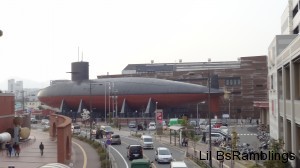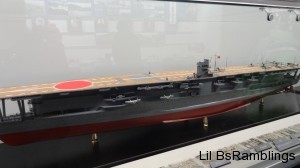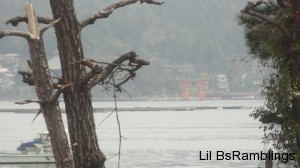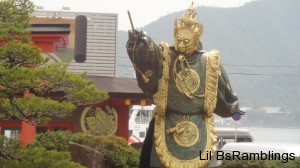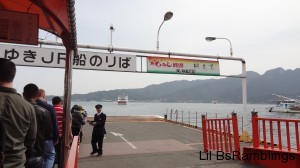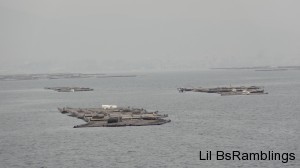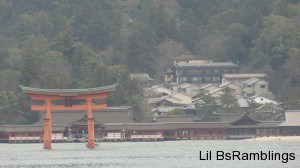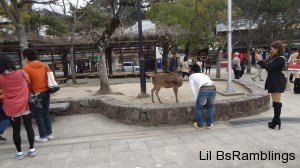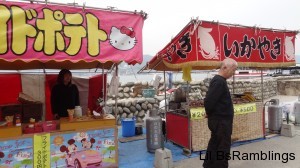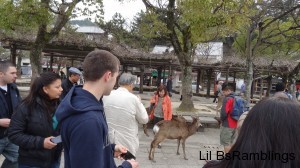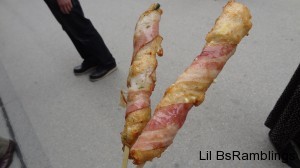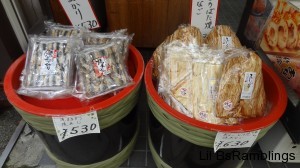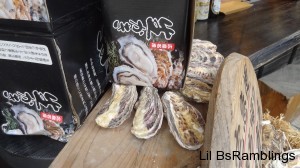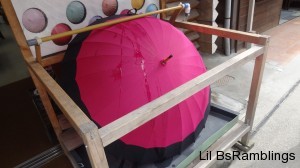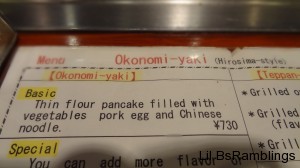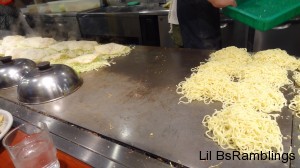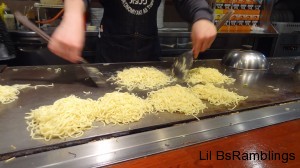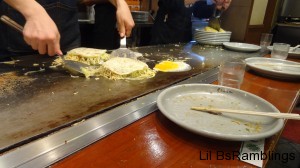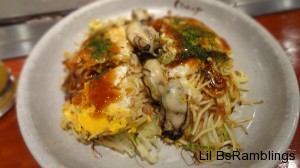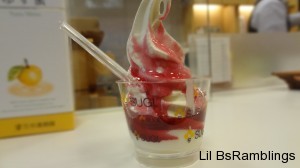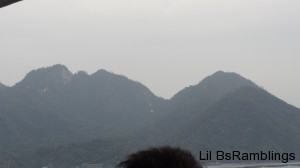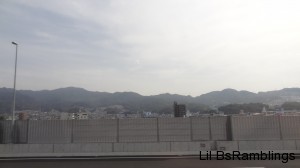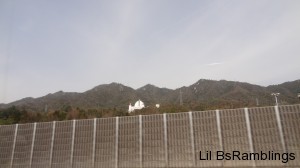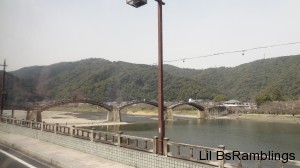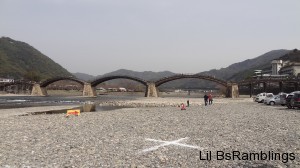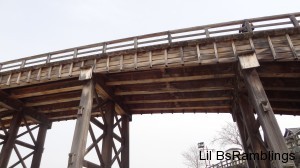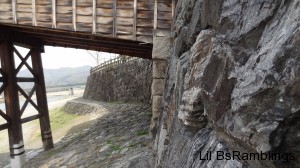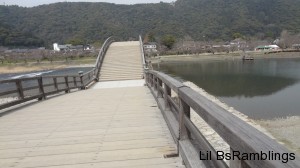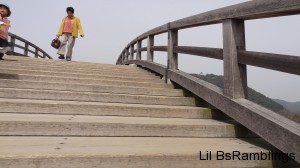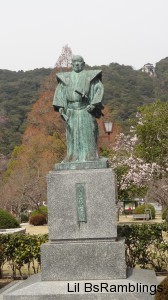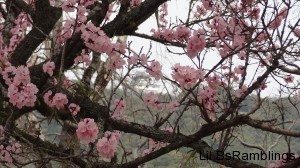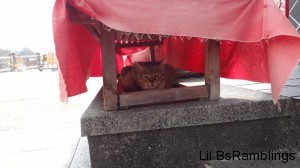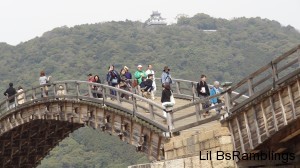Naval Museum In Kure, Japan
After my stop at Kintai Bridge and Miyajima Island, I had one more stop to make before my day was up: the Maritime Museum in Kure, Japan. It is built around a scale model of the Yamato battleship, the biggest battleship ever made. The Yamato and her sister ship, the Musashi, were “the heaviest and most powerfully armed battleships ever constructed” according to Wikipedia. The ships were designed to combat the fact that the US outnumbered Japan ships by attacking numerous ships at once. Yamato’s keel was laid in late 1937, sea testing began in late 1940 and commissioned a week after Pearl Harbor was attacked. Built in secrecy (which was rather difficult due to US intelligence abilities), the real fire power of the Yamato wasn’t discovered until the end of the war. Although the ship was built for war, it was used as a transport protector at least as much as it was a flagship. It was present at the Battle of Midway but was to far away to participate. Although present at the Battle of the Philippine Sea but only shot at Japanese planes, by accident. It wasn’t until the Battle of Leyte Gulf that the Yamato finally did significant damage before being chased off by a spread of torpedoes. As the war came to an end, the Japanese Admiralty made a desperate attempt to protect Okinawa by sending much of there surface craft (ships) to the island. Yamato’s orders were to “be beached to act as an unsinkable gun emplacement and continue to fight until destroyed.” It might have lengthened the war if the ship had made it. Instead the Americans learned of the planand sank her and much o her strike group in-route. She went down with most of her crew and the fleet commander onboard.
The term “Yamato” came from an old Japanese province. It had become a term for Japan itself in mythology and many Japanese citizens believed that the war could not be lost as long as the huge ship was able to fight. Is it any surprise that a museum was created to lament the loss of this flagship and the empire it represented?
That was a good history lesson, let’s get on with the tour, shall we?
I got off the bus a block away from the museum and walked over a walking bridge to the museum.
In front of the museum you can see a huge statue of Neptune and a number of nautical items like the anchor and propeller seen here. 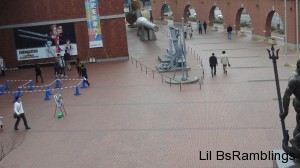 Inside the museum we bought our ticket and had the option of paying for the audio tour or going through the exhibit alone. I opted to go by myself instead of trying to keep up with the audio tour and take pictures. In the first room, the one the museum is built around, sits the 1:10 scale model of the Yamato battleship.
Inside the museum we bought our ticket and had the option of paying for the audio tour or going through the exhibit alone. I opted to go by myself instead of trying to keep up with the audio tour and take pictures. In the first room, the one the museum is built around, sits the 1:10 scale model of the Yamato battleship.
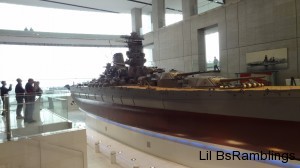
The 26.3 meter long model is a 1:10 scale (that’s one-tenth for those not used to building models) of the 72,800 ton ship that was over 860 feet from bow to stern was revealed in 2005 .
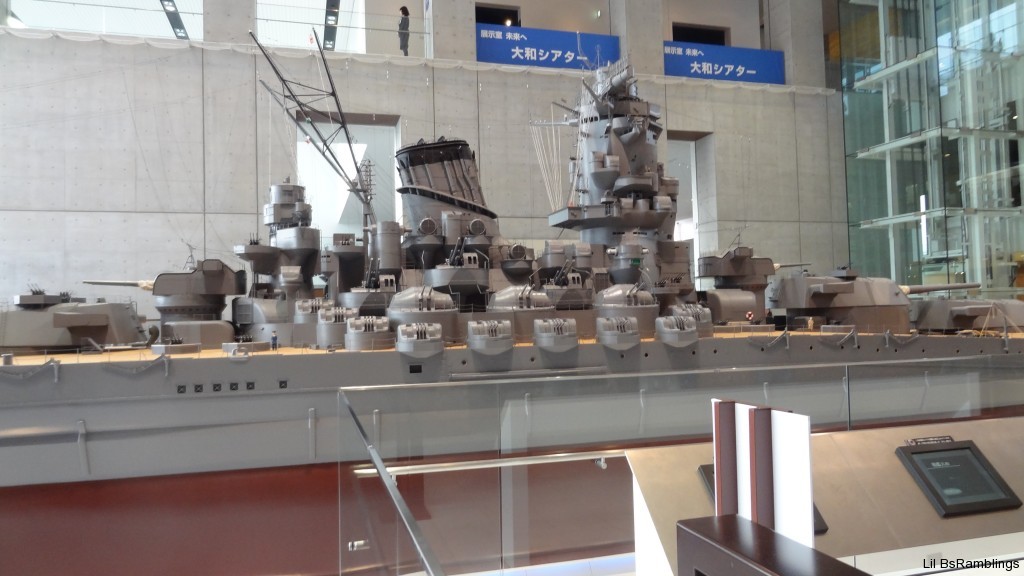 Can you see the scale?
Can you see the scale?
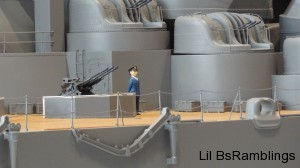
This guy is the scale of a real person compared to the ship. Talk about a huge ship, especially for the time.
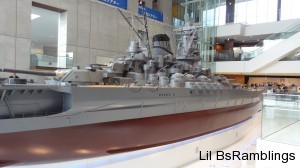
Here is the ship from behind. If you look closely at the guns in the middle of the picture you can see the scale sailor.
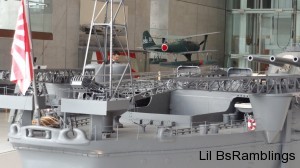
While the ship is covered in guns for attack or defense, it could also slingshot a small airplane off the aft of the ship.
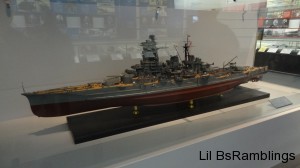
Here is a smaller model of the Yamato to show you just how much they managed to get on this battleship.
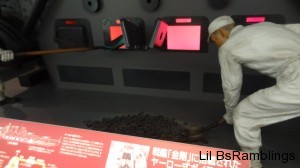
I didn’t stop to read too much (we only had an hour and I wanted to get all the way through the museum before we left) but this scene implies the Yamato was run on coal.
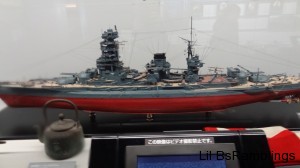
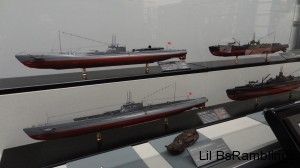
The museum had a lot of miniature ships
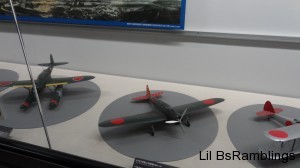 and airplanes from World War 2.
and airplanes from World War 2.
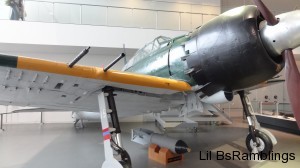
There were also much bigger items to examine, like this airplane
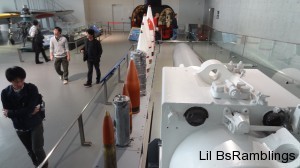 and these torpedo tubes.
and these torpedo tubes.
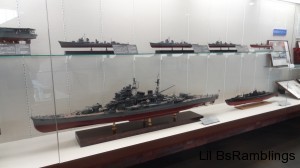
Another display case on the tour showed off more miniature naval craft.
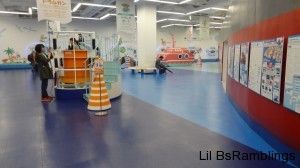
The last room on the tour was a child’s play room designed to give children (and the young at heart) a hands on experience with naval technologies
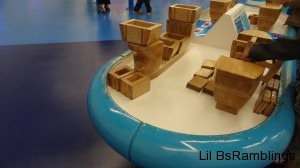
like this Build-Your-Own-Boat table.
I had fun seeing the sights around Kure, Japan but I’ll have to remember that twelve hours is not a very good time limit for being in this gorgeous area. I’m not sure I’ll ever go back by myself but the history and beauty of the area is something I won’t soon forget.
